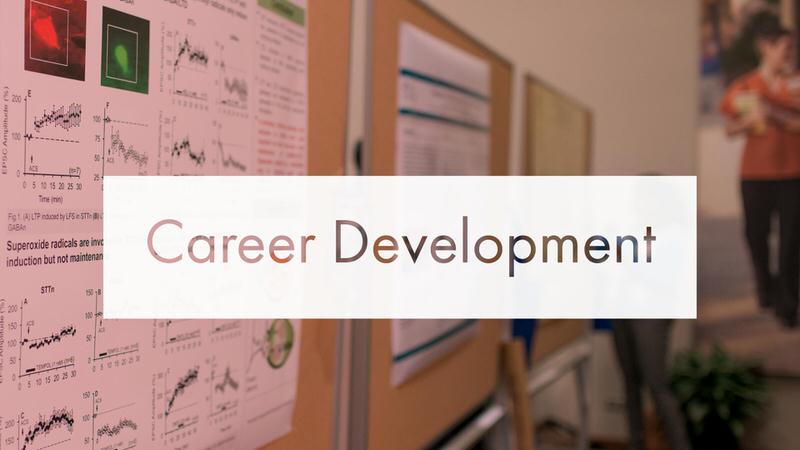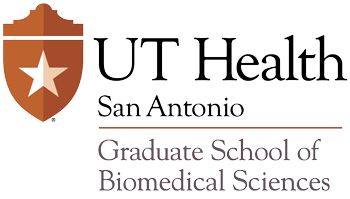SACNAS/GSBS Career Exploration Series: Kimberlei Richardson, PhD, Associate Professor

 The UT Health San Antonio SACNAS (Society for Advancement of Chicanos/Hispanics and Native Americans in Science) Chapter and the GSBS Office of Career Development welcomed Dr. Kimberlei A. Richardson, associate professor at Howard University College of Medicine in December 2020 for a Career Exploration Talk.
The UT Health San Antonio SACNAS (Society for Advancement of Chicanos/Hispanics and Native Americans in Science) Chapter and the GSBS Office of Career Development welcomed Dr. Kimberlei A. Richardson, associate professor at Howard University College of Medicine in December 2020 for a Career Exploration Talk.
Dr. Richardson earned both a B.S. in Chemistry and a Ph.D. in Pharmacology from Howard University and then did postdoctoral training at Johns Hopkins and Medical University of South Carolina. She then returned to Howard University where she works in the Department of Pharmacology at Howard University College of Medicine exploring neuropeptide regulation of binge eating and drug seeking and how neuropeptide regulation and the gut microbiota influence foraging behavior.
Dr. Richardson presented on Obstacles, Opportunities, and the Orexin System: Lessons learned while establishing a career in biomedical research. She presented on her research science & background, as well as presented a few of the useful lessons she learned.
To begin, she posed the question, how did she get started in drug abuse research? She originally started in respiration pharmacology and began a postdoc in a lab at Johns Hopkins with Dr. Estelle Gauda. However, the Gauda lab was not a drug addiction-specific lab. Dr. Richardson was getting training, but she wanted more in-depth training specifically related to drug addiction. After reading a very intriguing paper by Dr. Gary Aston-Jones, and with encouragement from Dr. Gauda, Dr. Richardson reached out to Dr. Aston-Jones about doing a second postdoc in his lab. Dr. Aston-Jones was receptive, and Dr. Richardson embarked on a new area of research. Which brings us to:
Lesson one: Change can be good!
Sometimes you can be in one place and then things happen that change your direction or trajectory. Don’t be stuck on one particular path – be flexible!
To set the stage for a discussion of her research, Dr. Richardson discussed two main behavioral models used in addiction research: Conditioned Place Preference (CPP) and Self-Administration. CPP provides a passive exposure to the drug where the experimenter injects the drug into the animal. Self-Administration is an active form of drug seeking where an animal is trained to press a lever for the reward (drug). Within these models, Dr. Richardson studies the Orexin system. These are specific neurons in the hypothalamus that synthesize two neuropeptides, Orexin A and Orexin B and were first discovered in 1998. She began researching the role of orexin system and the ventral tegmental area (VTA) in a model of protracted forced abstinence in the laboratory of Dr. Gary Aston-Jones.
For her postdoc project, she investigated the VTA as a selective target for orexin neurons in a model of protracted abstinence by comparing the functional topography of orexin projections to a reward-related versus an arousal-related area during protracted abstinence. She discovered that different sets of orexin neurons are engaged by morphine associated stimuli in nondependent versus post-dependent animals, depending on their projection targets.
Which leads us to:
Lesson Two: Good advice can change your perspective.
When you attend conferences, interact with others, introduce yourself, and meet faculty from other universities. Make it a mission to meet 1-2 faculty members at each conference. You should also stop by the booths, talk to program officials at NIH, NSF, etc and ask questions – don’t be shy.
While attending a Gordon Conference, Dr. Nancy Pilotte (a Branch Chief at NIH) asked her, “So, what’s next?” While Dr. Richardson felt comfortable where she was, ultimately, she knew this had to end because she needed to find a job. Dr. Pilotte helped spur her thinking about next steps. Dr. Pilotte was willing to listen to her and offer helpful suggestions. Dr. Richardson mentioned that this interaction helped her focus on plans and questions about her future. So, Dr. Richardson pondered how to carve out her own research area. She considered several different questions regarding how the orexin system is involved in normal feeding behavior, but may also be linked to binge eating disorder. Dr. Richardson encouraged the UTHSA students to read published literature related to their research interests because “You don’t want to repeat what someone else has done and you also need to know what still needs to be done.”
While at a Society for Neuroscience conference, Dr. Pilotte introduced Dr. Richardson to Dr. Cheryl Sisk, a well-known endocrinologist at Michigan State. They discussed common interests and Dr. Richardson learned that Dr. Sisk was using a rodent model of binge eating in her lab, which was something Dr. Richardson had been thinking about. This led to a collaboration and was a fortuitous connection. Which then leads to:
Lesson Three: Trust your own instincts.
It’s important to establish an independent research project about the questions that you are most interested in.
Dr. Richardson didn’t want a research project that just dovetailed off her project from her postdoc advisor’s lab. She followed her own interests, which were focused on orexin and binge eating and set up her lab accordingly.
Lesson Four: Always have additional plans! Think globally.
Dr. Richardson is now expanding on her research more broadly and across different areas. New areas of interest include how the microbiome affects food choice, along with research focused on foraging behavior. Over time, there are more and more areas to investigate. There are still a lot of questions to be answered!
Dr. Richardson ended her talk by taking questions from the audience. When asked for her advice about choosing a postdoc lab and mentor, Dr. Richardson advised choosing based on the person, more so than the project itself. “You should think holistically about how you choose your advisors and go somewhere that you feel like you can flourish. Is this person invested in your success, or just interested in their lab and the data/results produced? The project topic may be great, but if the mentor/postdoc advisor doesn’t have a good attitude about how to treat people, it’s not going to be a good working environment for you. Conducting scientific research is difficult in any environment, but it is extremely difficult in an environment that is not welcoming. Choose environments where you feel you are contributing and where you are respected. In that type of environment, you will do better, and your data will be better too. In addition to choosing the right environment, it is also important that the PI has funding to support you.”
For more information on Dr. Richardson and her research visit her lab website at https://richardsonlaboratory.org or follow her on Twitter @KRich2018.
